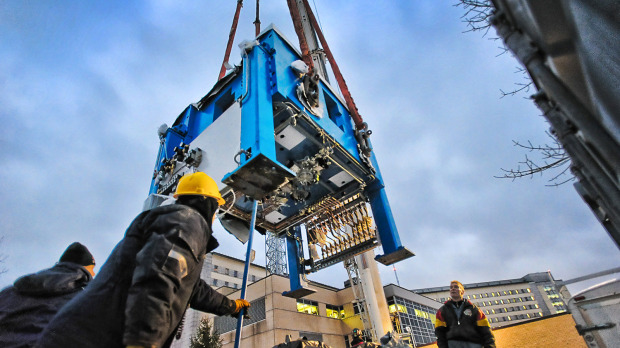The Globe and Mail
A made-in-Canada solution to our medical-isotope problem could come from a machine with a name that could have been pulled straight from the pages of a science fiction novel: the cyclotron.
“It was really pooh-poohed, this idea of using cyclotrons; they said there was no way we could produce enough in a commercially meaningful way,” says John Wilson, the cyclotron facilities manager at the University of Alberta’s Cross Cancer Institute.
In mid-2010, scientists at the University of Sherbrooke and the University of Alberta made technetium-99m, the most commonly used medical isotope, without a nuclear reactor. Last fall, the Alberta scientists began putting the cyclotron-produced technetium-99m through its paces, testing it in animals and humans, and found that the medical scans looked the same as those done using the regular stuff.
Now they’re looking to make more of it using more powerful machines, to prove that a cross-country cyclotron network could meet most of Canada’s medical isotope needs. Success could lift the country from its dependency on the aging reactor at the Chalk River Laboratories near Ottawa.
Last week, the University of Sherbrooke received a higher-current cyclotron from Advanced Cyclotron Systems Inc., a company based in Richmond, B.C. The University of Alberta will install the same model in an old curling club on its south campus by the end of March.
“Cyclotrons are a novel and very exciting way of producing technetium-99m,” says Kevin Tracey, vice-president of the Ontario Association of Nuclear Medicine and the medical director of nuclear medicine at Hôtel-Dieu Grace Hospital in Windsor.
“There remain some technical impediments to making it efficient in day-to-day operations, but if we can produce it close to home, in our communities, that is a much better solution,” he says.
Technetium-99m is the most common medical isotope used in the practice of nuclear medicine. About 80 per cent of all medical radioisotope tests—from cardiac perfusion tests to bone scans for cancer—require technetium-99m. In Canada, it’s used in roughly 1.8 million procedures annually.
But there’s almost no natural technetium-99m on Earth. Instead it is produced via a precursor called molybdenum-99 that must be made in a nuclear reactor from highly enriched uranium.

Leave a Reply